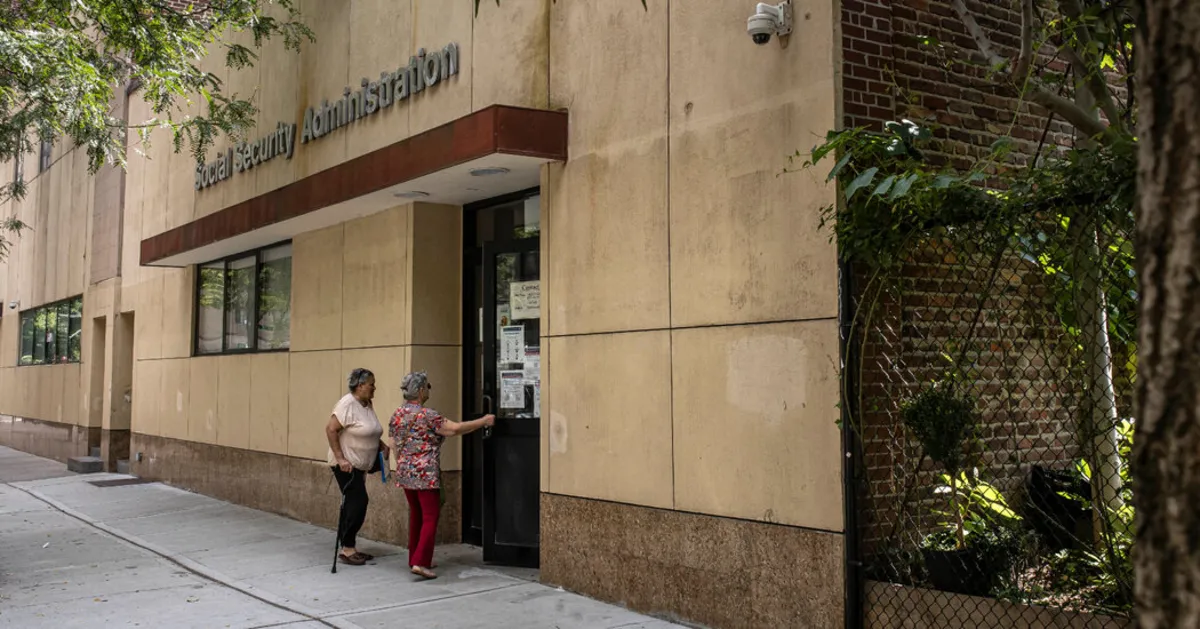
In a significant development for retirees and other beneficiaries, the Social Security Administration has announced a 2.8 percent increase in monthly benefits for the upcoming year. This annual cost-of-living adjustment (COLA) is designed to help counteract the effects of inflation on the financial well-being of approximately 75 million Americans, including retirees, their spouses, survivors, and those receiving disability benefits and Supplemental Security Income (SSI). The adjustment will take effect in January, with the average monthly benefit rising by about $56.
The COLA adjustment comes at a crucial time, especially as the maximum amount of earnings subject to the Social Security tax will increase to $184,500. However, much of this increase is expected to be absorbed by rising health care costs. According to a report by KFF, a nonprofit health care research organization, the financial burden of health care spending for those enrolled in Medicare is significantly higher than that of other households, accounting for 13.6 percent of total spending in 2022.
The actual dollar increase from the COLA varies based on an individual's benefit level. The net increase in benefits is contingent upon the projected rise in Medicare Part B premiums, which are typically deducted from the Social Security benefits of retirees. While the exact premium for 2026 has yet to be announced, recent projections suggest an increase of 11.6 percent, equating to an additional $21.54 per month, bringing the total to $206.50. If these figures hold true, nearly half of the COLA increase for the average beneficiary could be offset by the rise in Part B costs.
The modest COLA adjustment arrives at a time when many seniors are experiencing financial instability. A study conducted by the National Council on Aging reveals that 80 percent of Americans aged 60 and above lack sufficient resources to manage unexpected financial shocks, such as health crises or the need for long-term care. This report also highlights a concerning correlation between wealth and life expectancy, noting that lower-income individuals tend to die, on average, nine years earlier than their wealthier counterparts. “The bottom line is that it’s getting harder and harder to age in America,” stated Ramsey Alwin, the president and CEO of the National Council on Aging.
It's important to note that living costs and inflation rates vary significantly across the United States, which affects how far a Social Security benefit stretches in different regions. For instance, a single older adult in good health residing in New York City would require an annual income of $30,936 to cover basic expenses such as housing, food, health care, and transportation, according to the Elder Index. In contrast, the same individual living in Birmingham, Alabama would need only $21,576 for similar expenses, largely due to differences in housing and health care costs.
For many retirees, Social Security benefits replace approximately 40 percent of pre-retirement wages for middle-income workers. Closing the gap between these benefits and actual living expenses requires careful financial planning and savings. A recent study by Vanguard found that only 42 percent of Americans are on track to maintain their standard of living in retirement. Those with access to workplace 401(k) plans are reportedly twice as likely to be financially prepared for retirement. “Those who do have access appear to be on a stronger footing,” remarked Fiona Greig, the global head of investor research and policy at Vanguard.
While cutting discretionary spending in retirement is an option, it is typically more feasible for higher-income retirees who can afford to reduce expenses on leisure activities. “Lower-income individuals have less budget flexibility,” Greig noted, highlighting a significant disparity in financial resilience among retirees.
The COLA formula employs one of the broadest government measures of consumer prices, specifically the Consumer Price Index for Urban Wage Earners and Clerical Workers. This index captures price changes for a variety of goods and services purchased by working individuals. The COLA for 2026 aligns with the adjustments made over the past two years, following periods of significant inflation during and post-pandemic.
Recipients of Social Security benefits can expect to receive notifications regarding their new benefit amounts through mail and online platforms starting in early December. Additionally, the National Council on Aging provides an online benefits checkup tool to help individuals find assistance with health care, food, housing, and utility costs.